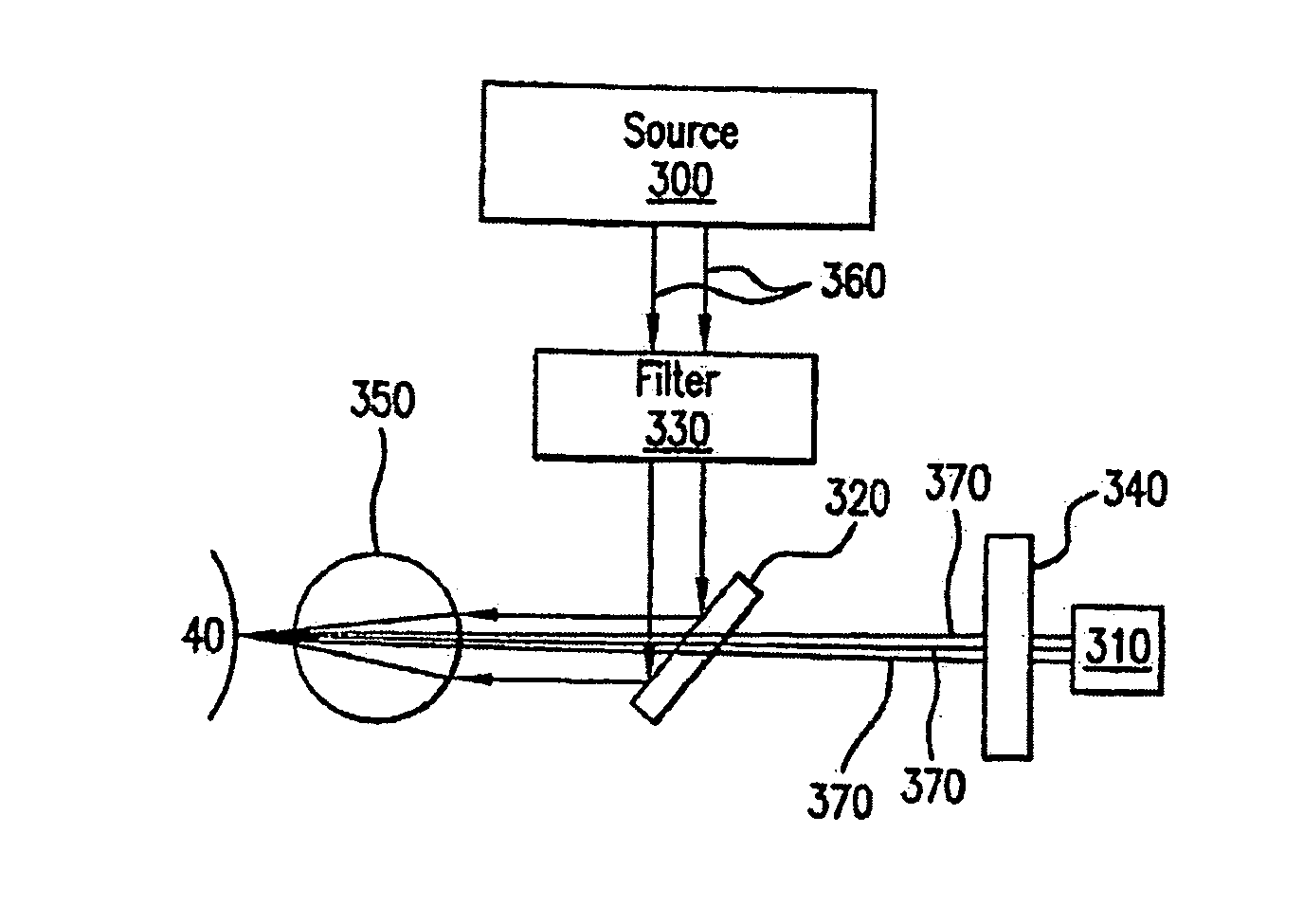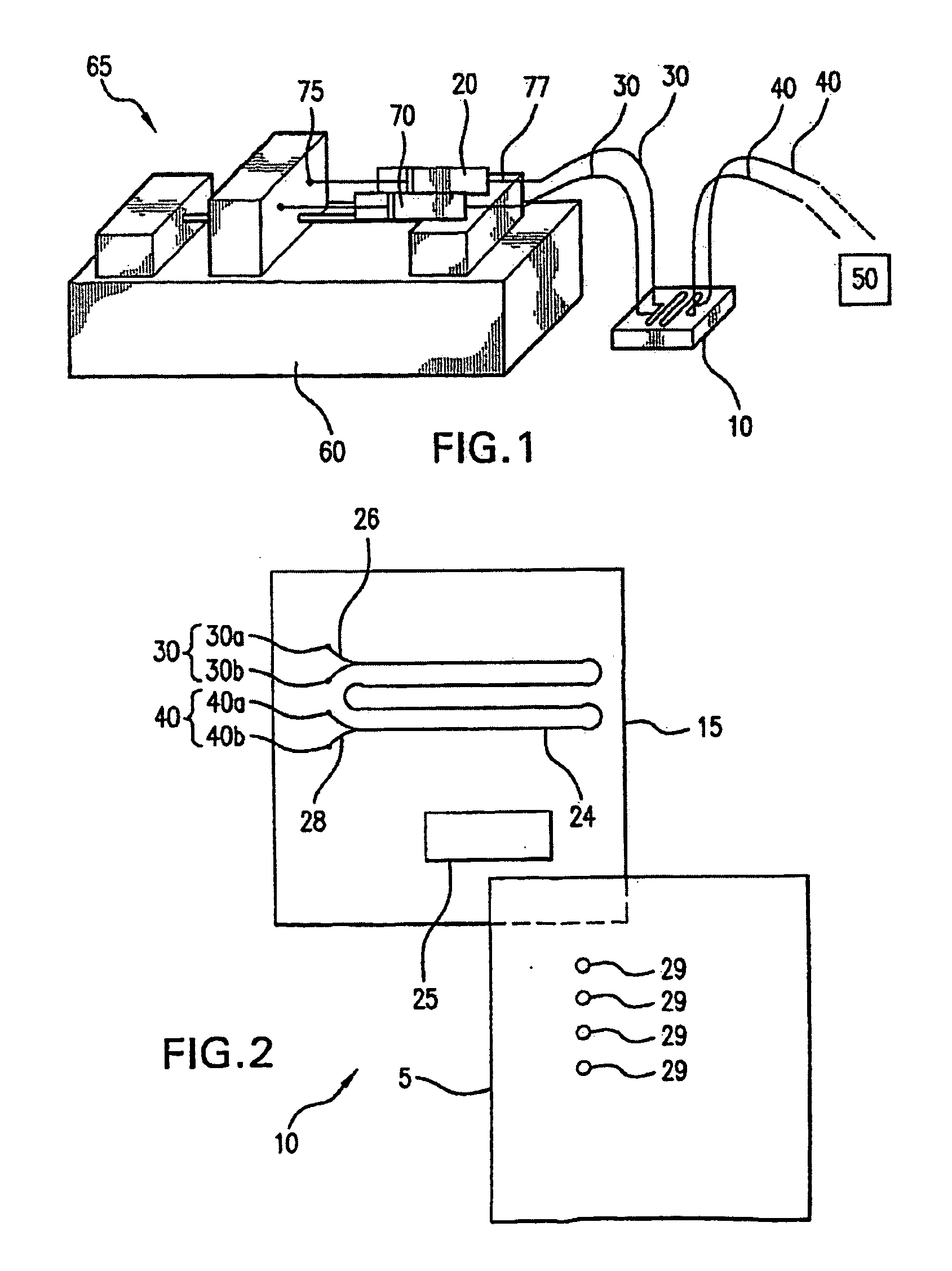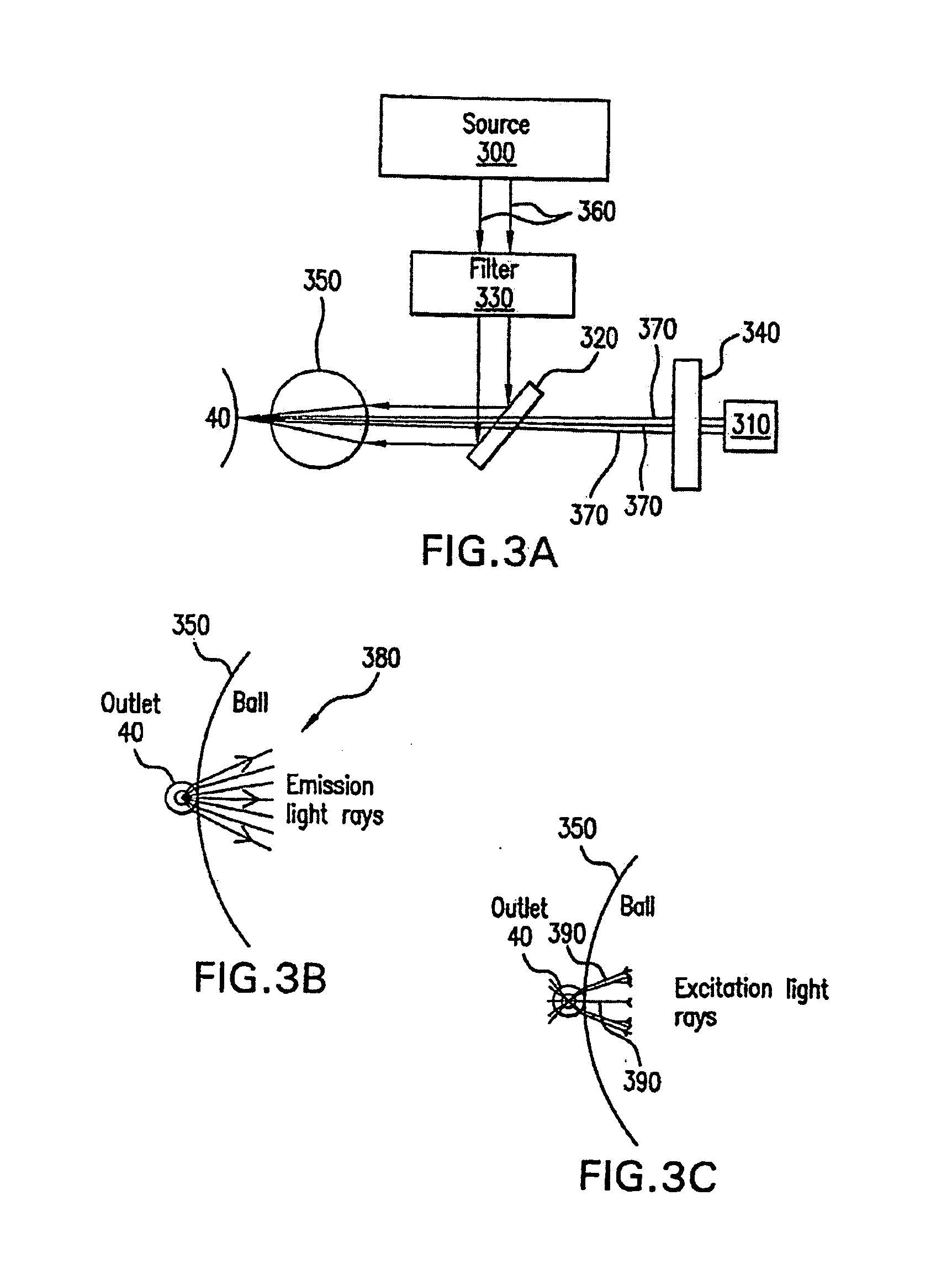Microfluidic Device for Identification, Quantification, and Authentication of Latent Markers
a microfluidic device and latent marker technology, applied in the field of identification and authentication, can solve the problems of limiting the rapid identification and quantification of a covert additive or feature, the bulky of machines and tools, and the difficulty of performing any type of identification, quantification or authentication in situ
- Summary
- Abstract
- Description
- Claims
- Application Information
AI Technical Summary
Benefits of technology
Problems solved by technology
Method used
Image
Examples
example 1
The Effect of Flow Rate
[0073]The rate of transformation (from latent to active form) often depends on the flow rate through the microfluidic cell. For example, lower flow rates may allow for improved and increased diffusion of the markers from the liquid (e.g., a fuel) to the transforming agent, and thus, higher fluorescent signals may typically be detected. In addition, the extent of transformation and signal level often depends on channel volume and quantity of the transformable marker. In some embodiments, capillary and channel diameters may also affect reaction time.
[0074]A fluorescent signal was detected using a detector / detection assembly similar to that described in FIG. 3A. Components of the system were housed in a machined plastic unit. A BrightLite filter set (Semrock, New York) optimized for measuring green fluorescent protein (GFP) was used. A light emitting diode (Roithner Lasertechnik, Austria) with a maximum output of about 470 nm was used as the source. The sensor ha...
example 2
Authenticating Potable Ethanol
[0078]Potable ethanol is often adulterated illegally with lower grade, and thus poses a need for a reliable, robust, and convenient authentication method. In this example, non-potable ethanol was marked with a covert marker and used to enable identification and authentication of potable ethanol adulterated with the non-potable form.
[0079]The marker used to identify non-potable ethanol was fluorescein diacetate, a marker that has no significant fluorescence when dissolved in ethanol. While fluorescein diacetate was used, any suitable marker with similar properties may be used. This includes markers that reside in an inactive form and may be transformed to an active form that is identifiable and quantifiable by a detector. Fluorescein diacetate may be transformed (via hydrolysis) in alkaline solutions to produce fluorescein to an active form with light-emitting properties that are detectable by an appropriate light detector.
[0080]In one example of the pre...
example 3
Plug Flow
[0083]In one embodiment, system 65 of FIG. 1 may be modified to include a reservoir / mixer for providing a plug flow. In one respect, a material comprising latent markers and a first agent (e.g., aqueous ethanol) that may transform the latent markers may be introduced to a microfluidic cell using techniques described above (e.g., using a pump system and the like). The introduction of the material simultaneously with the agent provides a laminar flow.
[0084]In one respect, the material may subsequently be split from the latent markers and removed via an outlet (e.g., outlet 40 of FIG. 2), leaving only the latent markers. For example, referring to FIG. 7, as the material 700 and markers 702 flow through the microchannel 24, the markers may penetrate through the interface 704 into the first agent 706, and thus at the split 708, the material may be subsequently removed, leaving the marker 702 and first agent 706. In one respect, a driving equilibrium (e.g., pH levels) may be adju...
PUM
| Property | Measurement | Unit |
|---|---|---|
| depth | aaaaa | aaaaa |
| width | aaaaa | aaaaa |
| width | aaaaa | aaaaa |
Abstract
Description
Claims
Application Information
 Login to View More
Login to View More - R&D
- Intellectual Property
- Life Sciences
- Materials
- Tech Scout
- Unparalleled Data Quality
- Higher Quality Content
- 60% Fewer Hallucinations
Browse by: Latest US Patents, China's latest patents, Technical Efficacy Thesaurus, Application Domain, Technology Topic, Popular Technical Reports.
© 2025 PatSnap. All rights reserved.Legal|Privacy policy|Modern Slavery Act Transparency Statement|Sitemap|About US| Contact US: help@patsnap.com



